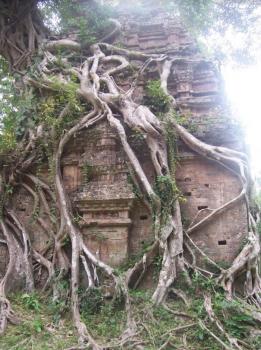Ahmadabad
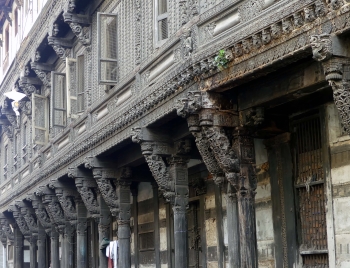
The Historic City of Ahmadabad is a walled city dating from the 15th century, especially known for its fusion of Hindu, Jain and Islamic elements.
The specific style can be seen in the city's religious buildings and domestic wooden architecture. Further notable are its clusters of gated streets (pol), which belong to families of a particular group, linked by caste, profession, or religion. The city is surrounded by a wall that dates from 1759.
Stanislaw Warwas Poland - 13-May-15
Visited January 2011 and May 2015
The first impression: Ahmedabad is a very dusty and very dirty city. But if you have a chance to spend there more than 2 days you will discover lots of gems - not only the mosques (Sidi Sayid, and Friday mosque) and museums (Calico Textile and city museum are the must!), but also beautiful old houses, temples, Badra fort (possible to visit now) and at least two step wells in the eastern part of old city.
Hint: as Ahmedabad is not a tourist trap at all you should know that there's only ONE place where you can buy postcards and souvenirs: boutique heritage hotel House of MG, opposite Sisi Sayid Mosque.
Read OnAphrodisias
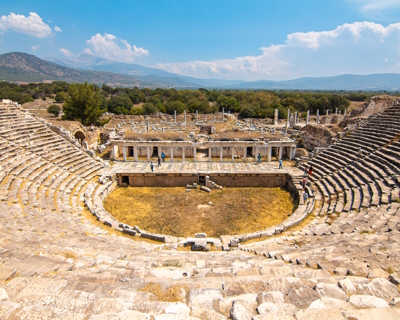
Aphrodisias is an archaeological site that covers the remains of the ancient town with the Temple to Aphrodite and the town’s marble quarries.
The site is representative of the expansion of Hellenistic culture in southwestern Anatolia. The town has other notable monuments such as the theatre, market square, auditorium, public baths and stadium. High quality marble was quarried a few km’s away, and turned into sculptures in the workshops of Aphrodisias.
Solivagant UK - 03-Jun-15
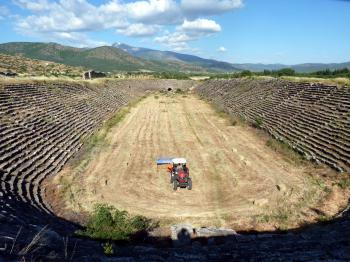
Aphrodisias is apparently scheduled by Turkey for nomination in 2017. We were in nearby Denizli to visit the inscribed site of Pamukkale/Hierapolis and were then driving down to the Selcuk area for Ephesus. So, at only 34 kms south off the direct route, it seemed worth taking in - even if we were hitting our “interest limits” on seeing Classical ruins! It turned out to be a worthwhile site, quite apart from that potential WHS “tick” banked for the future! What is less clear to me is how Turkey is deciding which of its many T List sites from this era are going forward next and how many more such cities the List can take!
Read OnAsmara
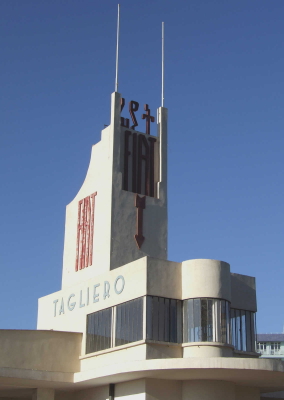
Asmara: A Modernist African City is an Italian-planned colonial city based on early modernist and rationalist architecture.
The urban ensemble was designed during several stages of development on an orthogonal grid plan with diagonal axes. The city was divided into quarters following the principles of racial segregation. During the short fascist period of 1935-1941 the city received its distinct public buildings, which mostly have survived intact since then and keep being part of the Eritrean identity.
Community Perspective: both reviewers so far enjoyed the overall atmosphere of Asmara, but while the freedom of movement for the foreign tourist seems to have improved since 2006, the 2020 review reports that the state of repair of the Art Deco buildings is worsening.
Solivagant UK - 20-Jun-08
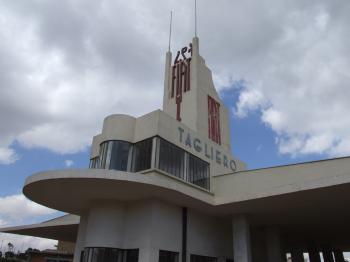
Well - could you guess that this is Africa (photo)? Just 1 of the amazing Art Deco buildings in Asmara. There is a fine book which catalogues all (most?) of the relevant buildings in the city - but I only found it at the airport when leaving. And there are a lot of these buildings. There are at least 4 "time warp" cinemas ranging in condition from "lovingly restored" to "in grave danger of falling down" The best are still in use and still have the original ticket offices etc and very pleasant cafes. This iconic Fiat garage/petrol station is unfortunately in sad need of repair
Read OnCaves and Ice Age Art
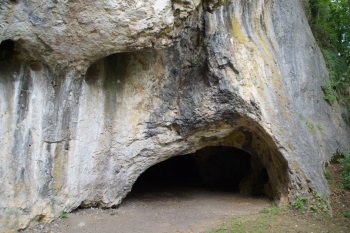
The Caves and Ice Age Art in the Swabian Jura comprise archaeological sites from the Aurignacian period where stone tools, figurative art and early musical instruments have been found.
It covers 2 locations with 3 caves each: the Ach Valley and the Lone River. The objects were carved from various materials, including mammoth ivory. Notable finding include the figurines of the ‘Venus of Hohle Fels’ and the ‘Lion Man’.
Nan Germany -
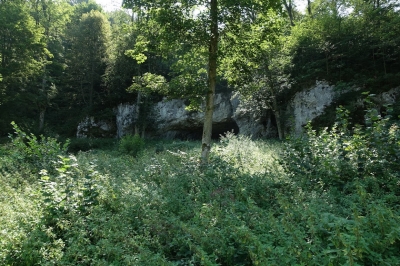
The Caves and Ice Age Art are yet another prehistoric site with all the caveats that go along with it. There isn’t all that much to see. The findings were moved off site and are shown in several museums. As upside, I really enjoyed hiking along the Lone valley on a sunny summer day. And as the caves aren't that touristy you are free to explore them.
Getting There
Blaubeuren and Schelklingen are on the same train line from Ulm. The caves are found between Schelklingen and Blaubeuren. Seeing the Urgeschichtliches Museum is in Blaubeuren, it seems best to start at the far end in Schelklingen and end up at the museum at the end.
Read OnHebron/Al-Khalil Old Town
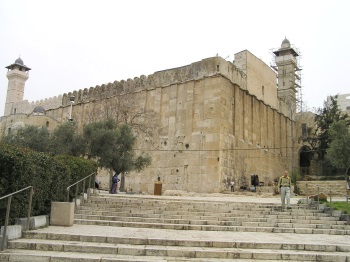
Hebron/Al-Khalil Old Town is a well-preserved urban fabric that developed during the Mamluk and early Ottoman periods.
The town developed around the Cave of the Patriarchs / Sanctuary of Abraham / Ibrahimi Mosque, a compound dating to over 2,000 years ago and associated with the Holy Books Torah, Bible and Quran. It is a site of pilgrimage for the three monotheistic religions: Judaism, Christianity and Islam.
Solivagant UK - 25-Jan-14
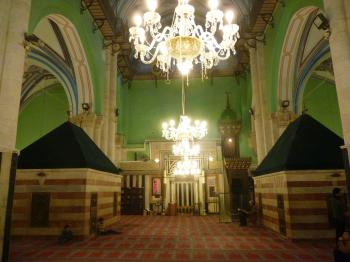
No doubt Assif can update us more accurately than I can regarding the complex realities of Israeli/Palestinian control across various parts of the City of Hebron. We visited the Israeli controlled area for a few hours, both to see the Tombs of the Patriarchs but also to try to get a feel for the situation. In that short visit I am unlikely to have fully understood matters but will do my best to describe what I can only describe as “a very strange visit”.
In common with some other entries on the Palestinian T List, that for Hebron represents possibly a statement of hope but more realistically, one of political posturing made in the face of a rather different reality in which the Palestinian Authority is not in control of the site and indeed seems less and less likely ever to be so as time passes - even if it is de jure within “Palestine”
Read OnKujataa
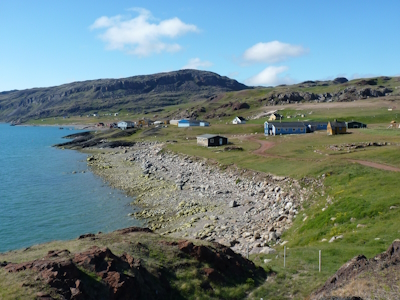
Kujataa Greenland: Norse and Inuit Farming at the Edge of the Ice Cap is a cultural landscape that represents the local farming and hunting cultures adapted to life in the Arctic.
The site has 5 components with features such as archaeological sites, agricultural lands and sheep farms. They include both elements belonging to the Norse Greenlandic culture, the first emigrants from Europe to settle here and introduced farming, and to the Thule Inuit culture.
Susan Dietrich USA - 21-Jul-08
I visited Brattahlid and Garder in 1974. It was incredible to discover actual ruins from the time of Erik the Red and at Garder his daughter Freydis still in existance. Amazing to think they have stood the test of time so well and one can still vividly imagine what is was like to settle there over 1,000 years ago. I never will forget the experience. Staying at Blue West One, hiking to the inland glacier, traveling down the fjord by boat, which I recall was named the Good Little Knud after Knud Rasmussen,to Narsaq, everything was marvelous. So marvelous in fact, that I later wrote a novel about all the Erikssons from the point of view of Gudrid Thorbjornsdatter yet to be published. If you like I will send you a copy
Read OnKulangsu
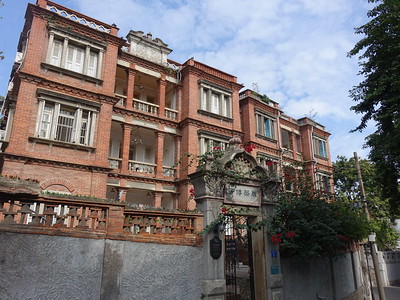
Kulangsu: A historic international settlement covers an island where interchange of Chinese, South East Asian and European architectural and cultural values occurred since the opening of a commercial port at Xiamen in 1843.
Foreign missionairies, diplomats and workers lived on Kulangsu while working in the larger city Xiamen across the strait. They were instrumental in introducing modern western culture and technology to China. The historic urban settlement consists of 931 structures (residences, schools, hospitals, gardens). The fusion of cultures resulted in a new architectural style: the Amoy Deco Style, which originated on Kulangsu and this is where the best representations of it can be found such as the Hongning Hospital and the Yanping Complex.
wang zhong China - 06-Dec-16
Visited Kulangsu in 2009. This island not far away from modern China City Xiamen (Amoy). The island is full of tourists by the time I visited and I believe the island itself became more and more heated over the years.
Away from the crowds you may find some peaceful beaches, architectures with obvious western influence. In general this is a popular place in China local love to travel.
Read OnLake District
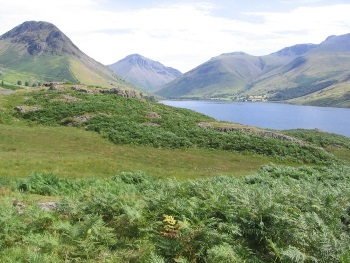
The English Lake District is a cultural landscape shaped by Ice Age glaciers where farming and the grazing of sheep since has defined the land.
It is a mountainous area of great beauty, that has inspired painters and writers since the 18th century. It has the highest peak of England, 13 narrow valleys, 16 lakes of glacial origin and woodlands.
Frederik Dawson Netherlands - 07-Jun-17
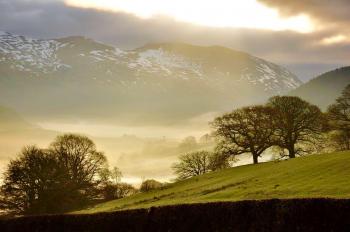
Even though I have heard the reputation of England’s Lake District for a long time, it was not in my top list of places I want to see on British Isles; however, when I visited Scotland last year autumn, it was a good opportunity to add an extra few days to go down to Cambria and to see the famous site. From Edinburgh, it was very convenient to reach Lake District by superb highway. Since I came from the north, I decided to use Keswick as my base to explore this national park. The landscape of Lake District along the Derwent Water was very lovely with beautiful mountain, pretty houses and amazing autumn foliage. I drove to the beautiful Honister Pass passing picturesque villages of Borrowdale and Rosthwaite
Read OnLandscapes of Dauria

The Landscapes of Dauria comprise undisturbed and diverse examples of Eurasian steppe with their characteristic wildlife.
The area, which is composed of four reserves in Russia and Mongolia, holds many lakes and wetlands. It is an important breeding ground for three crane species and a breeding and resting place for millions of migrating birds along the East Asian-Australasian Flyway. It also supports the annual migration route of the Mongolian Gazelle.
Community Perspective: Martina has been the only one to review this so far, describing a visit to Adon Chelon. She approached from the Russian side, where most parts need a permit secured well in advance.
Martina Rúčková Slovakia - 13-Sep-20
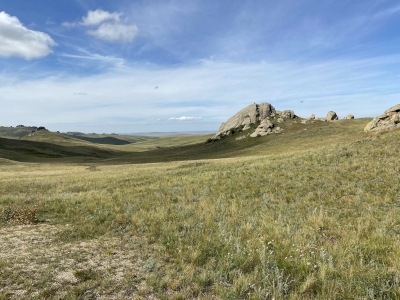
Searching high and low for unvisited WHSs in Russia, we followed a visit to Sikhote-Alin to a visit to Dauria on the Russian side. From what we understood, the most interesting aspect of the site are lakes that dry out and then refill with water in 30 year cycles. Those attract many interesting species of birds and the stepe is a wonderful place to look for all kinds of fauna and flora. However, as for the lakes, that's a visit to be planned well in advance - they are located in the border zone and you have to file an entry permit with Russian FSB - not a problem, but it takes 60 days to be issued. We did not have luxury of such time advance as we planned a trip something like three weeks before we departed
Read OnLos Alerces National Park
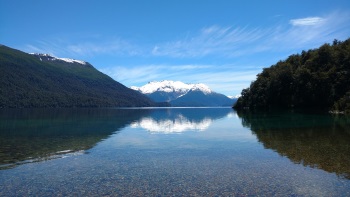
Los Alerces National Park is a visually stunning Andean landscape moulded by glaciations.
It is covered by lakes and temperate forests that include the best conserved pockets of globally endangered Alerce tree species. The Alerce (or Patagonian Cypress) is the second-longest living tree species in the world (> 3,600 years).
Nan Germany - 28-Nov-16
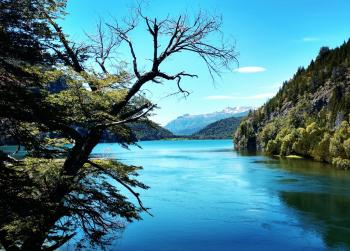
“No bus.” I stood there at a loss. I had made my way past four travel agencies in Esquel and now stood in the local tourist office. “Tomorrow, sorry, but no bus. Bus was today. Next bus is on Saturday.” Everyone had told me that, so it was of little surprise. Still, I wasn’t happy as this was my last chance.
It was Wednesday evening and my bus to Puerto Madryn and Peninsula Valdes was booked for the next night. I had only the following day to visit. And then the lady of the tourist office asked: “But why don’t you try to hitchhike?”
Read OnMbanza Kongo

Mbanza Kongo, Vestiges of the Capital of the former Kingdom of Kongo, represents the political and religious centre of a vast African kingdom that was transformed by the arrival of the Portuguese in the late 15th century.
The site (now a town of some 175,000 inhabitants) is located on a plateau. It comprises both archaeological remains of the precolonial period as well as colonial structures – often overlapping each other. The Kingdom of Kongo has strong intangible links with the slave trade and the early conversion of African kings to the Catholic religion (with a Cathedral and Jesuit College in place from the early 17th century).
Community Perspective: this site has been unreviewed so far.
Okinoshima Island
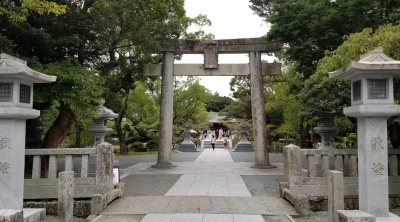
The Sacred Island of Okinoshima has been a ritual site from the 4th – 9th century.
Ritual practices and votive offerings were made to pray for safety in navigating the seas, for boats heading to Korea and China to trade. The site includes three nearby islets, Koyajima, Mikadobashira and Tenguiwa, and 4 sites on and closer to Kyushu. There are a number of taboos and restrictions on visiting Okinoshima, including a ban of women and the prohibition “to speak of anything they have seen or heard on the Island”.
Zoë Sheng Chinese-Canadian - 12-Oct-17
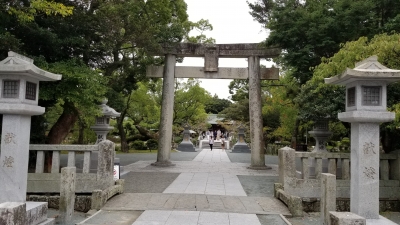
Okinoshima AND RELATED SITES was just recently added to her UNESCO stable. As many already know, going to Okinoshima is not possible for but a few males and even now they are dicussing about making this sacred island visitor-free forever. One needs to understand that these sites were inscribed for cultural reasons and the untouched nature on Okinoshima is impossible to observe.
The other destinations are, however, not difficult to see. Question is if they are worth it though. For the regular Joe tourist there is absolutely nothing special to see. They are Shinto shrines like you see in many places. Have you been to Kyoto? You most likely saw better ones. Unless you are a religious person they don't offer you much value. There are no English signs and all tourist groups are Japanese.
Read OnQinghai Hoh Xil
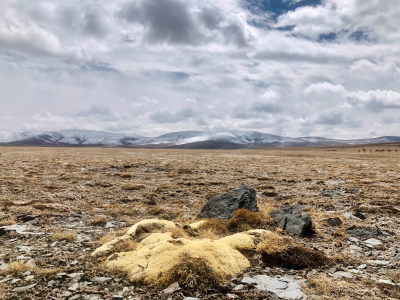
Qinghai Hoh Xil covers two protected areas on the high altitude Qinghai-Tibetan Plateau: Hoh Xil National Nature Reserve and the Soja-Qumar River sub-zone of Sanjiangyuan National Nature Reserve.
Temperatures average sub-zero year-round. Glacial meltwater supplies the many rivers, lakes and marshlands in these reserves. The site is also important as calving area and place of seasonal migration of large numbers of Tibetan antelope.
Zoë Sheng Chinese-Canadian - 24-Jan-19
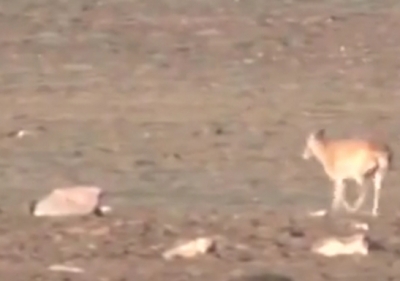
I am finally writing a review because I have decided I will never REALLY visit the site, and I doubt most tourists have the chance. It is actually super easy to visit but like so many national parks in China the protected area not accessible which are the best part I suppose. The G109 highway as well as the Xining - Lhasa train cut right through the reserve and thus you will have been at Hoh Xil. You won't see much from here but maybe a glimpse of the antelopes extant to this very much uninhabited area. Apparently there is a huge problem with poaching for the underpaid police force, with volunteers helping out (source of this info may be censored news)
Read OnSambor Prei Kuk
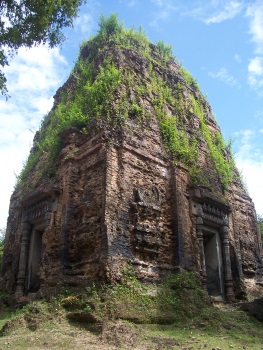
The Temple Zone of Sambor Prei Kuk is an archaeological site of the Pre-Angkorean period.
The site correspondents with Ishanapura, the capital city of the Chenla Empire whose buildings and watercourses influenced later Khmer architecture. 186 fire-brick Hindu temples remain, showing a mix of regional architectural influences and carrying sculptures and important temple inscriptions in the Khmer language. A particular feature is its octagonal-shaped temples, the oldest of their kind in South-East Asia.
Community Perspective: clearly complementary to Angkor, as it provides a good look at pre-Angkorian styles of art and architecture. It does have the same jungle setting with trees growing in and on top of buildings, but due to the smaller crowds (if any) Sambor Prei Kuk is a more intimate experience. Read Frederik’s review for more details on the art styles.
Sviyazhsk
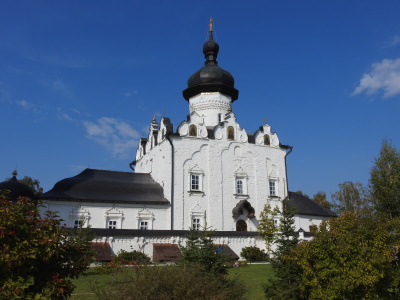
The Assumption Cathedral of the town-island of Sviyazhsk is a Russian-orthodox cathedral renowned for its complete 16th-century cycle of murals bearing symbolic meaning.
The Cathedral dates from the period of Ivan the Terrible, when missionary posts for spreading Christianity in this originally Islamic Tatar region were established. It is part of a homonymous Monastery.
Wojciech Fedoruk Poland - 01-Sep-16
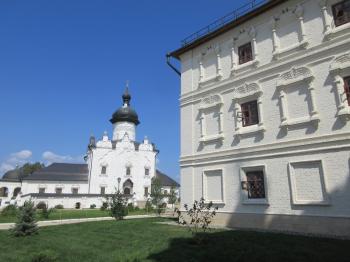
About 60 km from Kazan, on the opposite side of Volga river, lays small but beautiful town of Sviyazhsk. The town was built by tsar Ivan the Terrible in order to have a good starting point to invade Kazan Khanate. He built there numerous tserkvas, nunnery and of course a stronghold. In that time Sviyazhsk was one of the most important towns in the Moscow Tsardom.
But the successful ride on Kazan in 1552 was the end of Sviyazhsk’s golden years. Kazan, although thoroughly destroyed, soon became the real capital of that region. Sviyazhsk only sustained his status of a regional centre of Orthodox faith.
Read OnTaputapuātea

Taputapuātea is a sacral site and cultural landscape on Ra’iatea Island (part of the Society Islands) in French Polynesia.
It consists of several archaeological sites and marae (temples). Its main feature is the Taputapuātea marae complex, constructed from the 14th -18th centuries which is considered the central temple of Eastern Polynesia and which has a strong oral tradition connected with it. It is of continuing importance to a living culture: the sites fell into disrepair after the Europeans settled in this area, but were restored in 1968 and as recent as the 1990s.
Dennis Nicklaus - 12-Feb-19
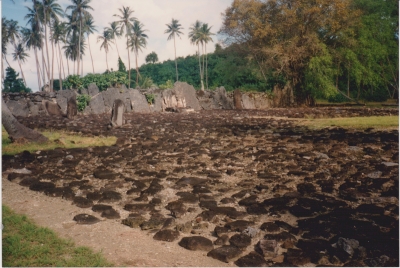
We visited Taputapuatea in 1991 when we had a short vacation on Raiatea. Taputapuatea is a set of ancient Polynesian marae, which you can think of as a large open air stone temple. It was the principal marae of the ancient Polynesian culture, the one to which chiefs from all over had to return to for their coronation. The most prominent marae on the site was dedicated to the Ora, the Polynesian god of war. Some of the features here were some important tall stones in the courtyard in front of the main temple, for instance the chief's stone (which he would stand in front of to protect his back) and the human sacrifice stone. If the first blood of the sacrifice didn't seem to satisfy the gods, they would go to the nearby scraping rock to bloody him up more
Read OnTarnowskie Góry Lead-Silver-Zinc Mine
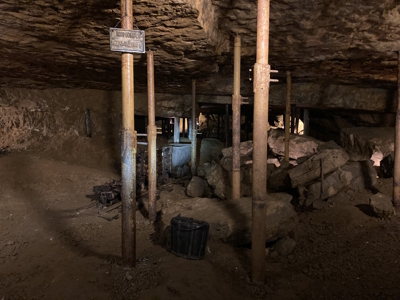
Tarnowskie Góry Lead-Silver-Zinc Mine and its Underground Water Management System is a historic mining landscape with mostly underground parts. Its hydraulic system for water supply is seen as innovative for its time.
Tarnowskie Góry’s lead-silver deposits were discovered in the late 15th century. Its lead was used in the smelting of silver gathered from sites in Europe and New Spain. A second phase of production started in the late 18th century during the process of industrialization of Prussia. Then it produced mainly zinc. The mine closed in 1933.
Its ore lodes extended horizontally rather than vertically and were relatively superficial. This geological setting included underground aquifers and had a tendency to retain water. To be able to get to the ore deposits, the water had to be pumped away and redistributed via an extensive drainage network.
Jarek Pokrzywnicki Polska - 02-May-17
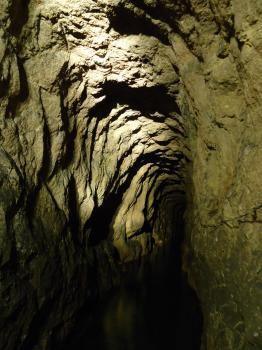
Some basic information and hints how to visit the site - possible inscription of 2017.
Whatever the final inscription will be the most impressing sites are the Historic Silver Mine (Zabytkowa Kopalnia Srebra) and Black Trout Adit (Sztolnia Czarnego Pstrąga) both located south of Tarnowskie Góry town in Silesia Voivodship (Southern Poland).
Due to working hours it is better to start visit form Historic Silver Mine (there are guided tours in English, German, Russian or Czech - at least in theory) ask at the main office. The whole trip takes around 1,5 - 2 hours. After visiting the mine you can also visit the nearby open-air museum of old mining machinery.
Read OnValongo Wharf
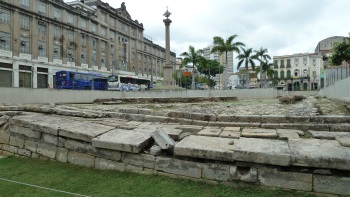
Valongo Wharf Archaeological Site comprises the globally most significant remains of an arrival point of enslaved African persons in the Americas.
The wharf located at Rio de Janeiro’s Jornal do Comércio Square was built from 1811 onwards, and used until the construction of the Empress’ Wharf in 1843. About a quarter of all African American enslaved people to the Americas have arrived here. While its physical remains are modest (fragments of a pavement, a former road), its spiritual associations as a site of conscience for African Americans are strong.
Ian Cade UK - 04-May-16
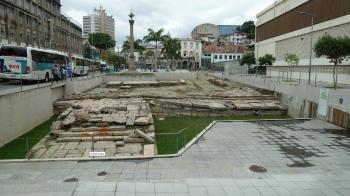
In brief, Valongo wharf (location) is the archaeological remains of the slave trading port in Rio which was one of the major points of entry of African slaves into the Americas.
The wharf used to jut out into the harbour, but it is now quite a way from the water and there isn't a whole lot to see. The small area of archaeological ruins lies on a newly constructed square in an otherwise unassuming part of central Rio next to a Hostpital. You can sort of make out a layout. Traces of walls give some perspective but you will need some extra input to make sense of what is a really interesting site, fortunately there are some multi lingual boards around the area to help.
Read OnVenetian Works of Defence
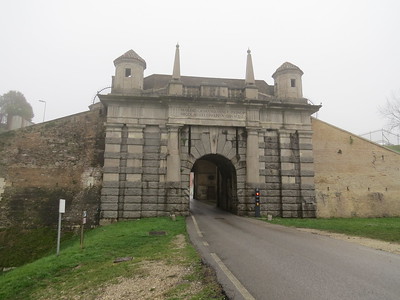
Venetian Works of Defence Between 16th and 17th centuries: Stato da Terra – Western Stato da Mar are 6 fortifications along the Adriatic Sea that date from the historic Republic of Venice.
They represent the evolution of Venetian military solutions and their innovations in architecture and methods. In the whole, they created a defensive line that guarded the Venetian commercial network.
Ian Cade UK - 17-Aug-12
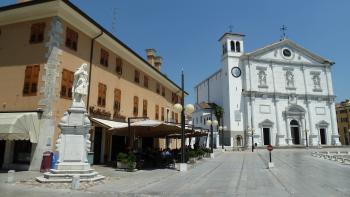
Unknown to me, John S. below has written almost word for word my summary of this town. Though I probably wouldn’t use the word ‘boring’, more just ‘laid back’, though I was blessed with magnificent weather on my 30 minute stop en route to Aquileia.
The best way to view this town is if you are heading over on a plane (I landed at nearby Friuli Venezia Giulia Airport) which allows you to see the star shaped lay out, or you could just have a look on a satellite map.
The unique lay out means that it can be a touch disorientating as all the roads look the same as they radiate from the central square to the bulky town walls. I really enjoyed my espresso in the great café next to the Duomo whilst watching the fleet of vintage Vespa’s parading around the square, and after a quick climb of the fortifications I was off on my merry way
Read OnYazd
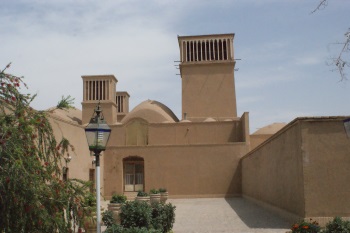
The Historic City of Yazd is a traditional earthen city where life has been adapted to its desert location, most notable via the water system of the qanats.
Yazd is a city with a long history dating back to the Achaemenid era and was located along the Silk and Spice Roads. It prospered from trade. The earthen constructions include both residential and public buildings.
Solivagant UK - 24-Mar-17
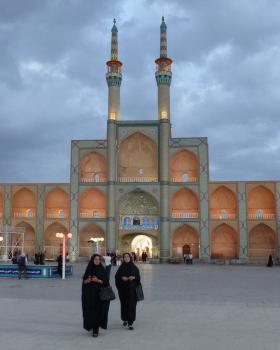
With this T List site up for consideration at the 2017 WHC in a few months time it seems worth having a review of it available here (especially as those who have already committed themselves to a guess on this site have voted it an “Inscribe”!).
I have tried to remember why I didn’t review it immediately after our visit in May 2016. It was certainly not because it wasn’t an interesting and worthwhile place - we gave it a full day and 2 nights in our very crowded schedule and don’t regret that at all. I have just reread the entry on UNESCO and I think that it might have been part of the reason. The entire description is limited to this one sentence - “The historical structure of Yazd is a collection of public-religious architecture in a very large scope comprising of different Islamic architectural elements of different periods in a harmonious combination with climatic conditions
Read OnǂKhomani Cultural Landscape

The ǂKhomani Cultural Landscape is a vast desert area associated with ǂKhomani San culture since the Stone Age.
The area amongst the sand dunes of the Kalahari Gemsbok National Park lies in a hostile, dry environment plagued by predators. It was used by the indigenous ǂKhomani San hunter-gatherers for water and (medicinal) plants. The tangible remains include archeological sites and graves.
Community Perspective: reviewers regret that natural aspects weren’t part of the nomination, as Kalahari Gemsbok (the South African part of Kgalagadi Transfrontier Park) is a great park. Walter and Solivagant were relatively early visitors (1997 and 1998 respectively), when the access roads were still mostly gravel and the cultural aspects were not yet much emphasized. Tamas recently deep-dived into the cultural aspects on a 2-day tour.
Walter Switzerland - 05-Jun-17
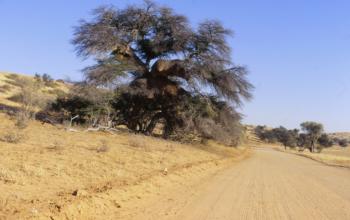
The ǂKhomani Cultural Landscape, otherwise known as the The !Xam Khomani Heartland corresponds in fact to the Kalahari Gemsbok National Park. To add some more confusion, together with the Bostwana Gemsbok National Parks, if forms the African Kgalagadi Transfrontier Park.
South Africa justifies the OUV with the association of the red dunes of the parks and the ǂKhomani and related San people, who descend directly from the ancient population that inhabited southern Africa around 150,000 years ago.
Read OnExtended Sites in 2017
Bauhaus Sites

The Bauhaus and its Sites in Weimar, Dessau and Bernau are the most prominent representations of the Bauhaus architectural school (1919-1933).
The "Staatliche Bauhaus" was founded in Weimar in 1919 by Walter Gropius. In Weimar the Art School, the Applied Art School and the Haus am Horn are inscribed. The Art Schools were designed by the Belgian master Henry van de Velde. The Haus am Horn was the first practical statement: a Bauhaus settlement of single-family houses like this was planned. Due to political pressure, the Bauhaus had to leave Weimar in 1925.
They ended up in Dessau, where the second (and more successful) phase of Bauhaus started. Prominent here were Hannes Meyer and Ludwig Mies van der Rohe. In Dessau, the designated sites are the Bauhaus building and the group of seven Masters Houses. Especially the Bauhaus building, made out of concrete, glass and steel, is a landmark in 20th-century architecture. The main monument in Bernau is the ADGB Trade Union School.
Ian Cade UK -
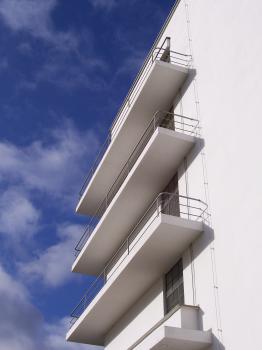
If your idea of a good World Heritage site is a historic city centre, then this is perhaps not the best place to visit as arriving from the train station the Bauhaus itself could easily be mistaken for any other municipal building pretty much anywhere in the world. However if like me you have a keen interest in modern architecture or design this is less a visit and more a pilgrimage.
The main building of the Bauhaus was designed by Walter Gropius after the school was forced to relocate due to political changes in Wiemar. Gropius is one of the key architects of the twentieth century and this building is his masterpiece
Read OnPrimeval Beech Forests
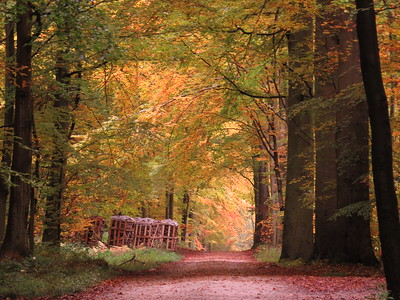
The Ancient and Primeval Beech Forests of the Carpathians and Other Regions of Europe show the expansion and genetic adaptability of the European beech since the last Ice Age.
They comprise the largest remaining forests of the European beech ('Fagus sylvatica') across 18 countries. They also hold the largest and tallest beech specimens in the world. The European beech is a very adaptable species and it is spread across areas of different altitudinal zones, with different climatic and geological conditions.
Community Perspective: “I would like this beech forest madness to stop.” – this cry from Philipp seems to sum up the verdict on this WHS nicely; Caspar also shares some philosophical insights on the matter. But reviewers keep being drawn to its many locations. An inventory of the reviews results in 14 parks ‘ticked’: Vihorlat (Slova) – Els, John, Petteri, Matejicek; Stuzica (Slova) – Jarek, John; Hainich (Ger) – Hubert, John, Ian, Nan, Adrian; Kellerwald (Ger) – Peter, Clyde, Solivagant, John, Nan; Grumsin (Ger) – Boj, Tsunami, Adrian; Jasmund (Ger) – Thijs, John, Michael, Matejicek, Nan, Tsunami, Adrian; Serrahn (Ger) – Adrian; Sonian Forest (Bel) – Els, Caspar; Monte Cimino (Ita) – Matejicek; Foresta Umbra (Ita) – Matejicek; Bieszcziady (Pol) – Matejicek; Jizera (Cz) - Matejicek; Bettlachberg (Swi) – Philipp; Mavrovo (NMac) – Chris.
Els Slots The Netherlands - 26-May-08
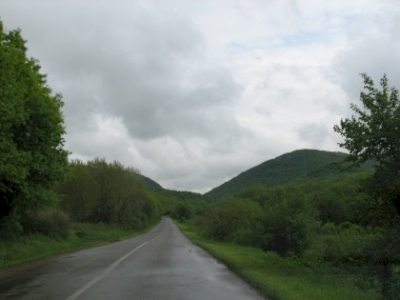
In preparation for my visit, I had a difficult time finding any practical information about the nominated properties in Slovakia. My guidebook has nothing of any value on them but does include a handy map called 'Snina wooden churches' that covers the same area. The IUCN evaluation holds a shady map, which seems to point out only 3 properties on the Slovak side instead of 4. A better bet for maps is the Slovak/Ukrainian nomination dossier. I also found a regional website that has information about villages and parks. It describes access to the Vihorlat Protected Landscape via the village of Zemplínske Hámre. So I turn this route into the goal for myself today, possibly (weather and other circumstances permitting) with a walk to Morské Oko lake.
Read OnStrasbourg
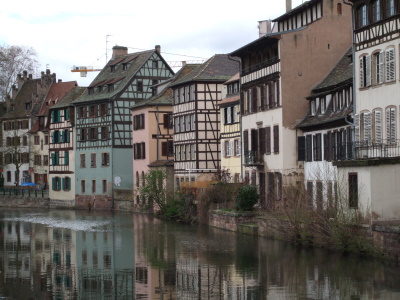
Strasbourg, Grande-île and Neustadt comprises the medieval historic centre of Strasbourg including its Cathedral and its German-built New Town.
The Grand Ile started out as the Roman camp of Argentoratum, and developed itself into the free city of Strasbourg. It was an important commercial centre in the Middle Ages.
The gothic Cathedral was started in the late 12th century. A team coming from Chartres suggested a high gothic design. Pink sandstone from the Vosges was used for the construction. It has one 142m high filigree spire. The height of this spire was unequaled until the 19th century: it was the world's tallest building from 1647 to 1874. The design of the cathedral became very influential in Germany.
The ensemble on the island Grand Ile also consists of several old churches and a network of (post-)medieval streets. Their names reflect the guild movement, from the tonneliers to the tanners. Black and white timber-framed buildings adorn the streets.
Ian Cade UK -

I have to admit perhaps my favourite places to visit are these medium sized European cities, and Strasbourg was definitely well worth a weekend break.
The city centre is on an Island (Grande Isle) and its main assets are two fold, hopefully shown in the photo. Firstly rows of half-timbered houses overlooking cobbled streets/ waterways. Secondly the massive Gothic Cathedral. It was regarded by Goethe as the finest Cathedral in Europe, and its main edifice certainly ranks up there with the best. Inside is a fine astronomical clock, which like every other one I have seen is achingly under whelming to watch in motion on the hour.
Read OnW-Arly-Pendjari Complex
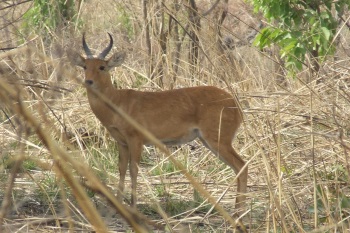
The W-Arly-Pendjari Complex comprises a savanna landscape recognized for its biodiversity of birds, fish and plants.
These three contiguous parks are located within the Volta River basin at a transition zone between savannah and woodlands, with both terrestrial and aquatic ecosystems. The area is a refuge for species that have mostly disappeared from the rest of West Africa, such as elephants, wild dogs, lion, leopard, cheetah and manatee.
Community Perspective: you won’t find wildlife in the innumerable quantities of the East African parks, but at least in visible herds. The facilities suffer from underinvestment and the border area with and in Burkina Faso is considered unsafe. Tamas made an adventurous approach to the part in Niger (Park ‘W’) as did Michael, while Solivagant and Chris focused on Pendjari in Benin.
Szucs Tamas Hungary - 31-Dec-12
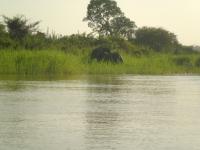
West Africa is not the right place to see animals. In most of the West African parks you can see practically nothing but the landscape. This was the case in Mole National Park of Ghana, where the most interesting animals we have seen were ants - forming a long strip on a lakeshore. Park W is much more difficult to reach than Mole, but as a reward, you can see some wildlife. Not comparable with the great East African parks, but at least there you can say, you were not sitting in a 4wd for days in vane. Because getting to the park is definitely not easy. First somehow you have to get to Niger -that can be a challenge itself. We tried to apply for a visa in Berlin, but were refused, so applied again in Accra where some "extra processing fee" helped us to get the visa of our dreams
Read On